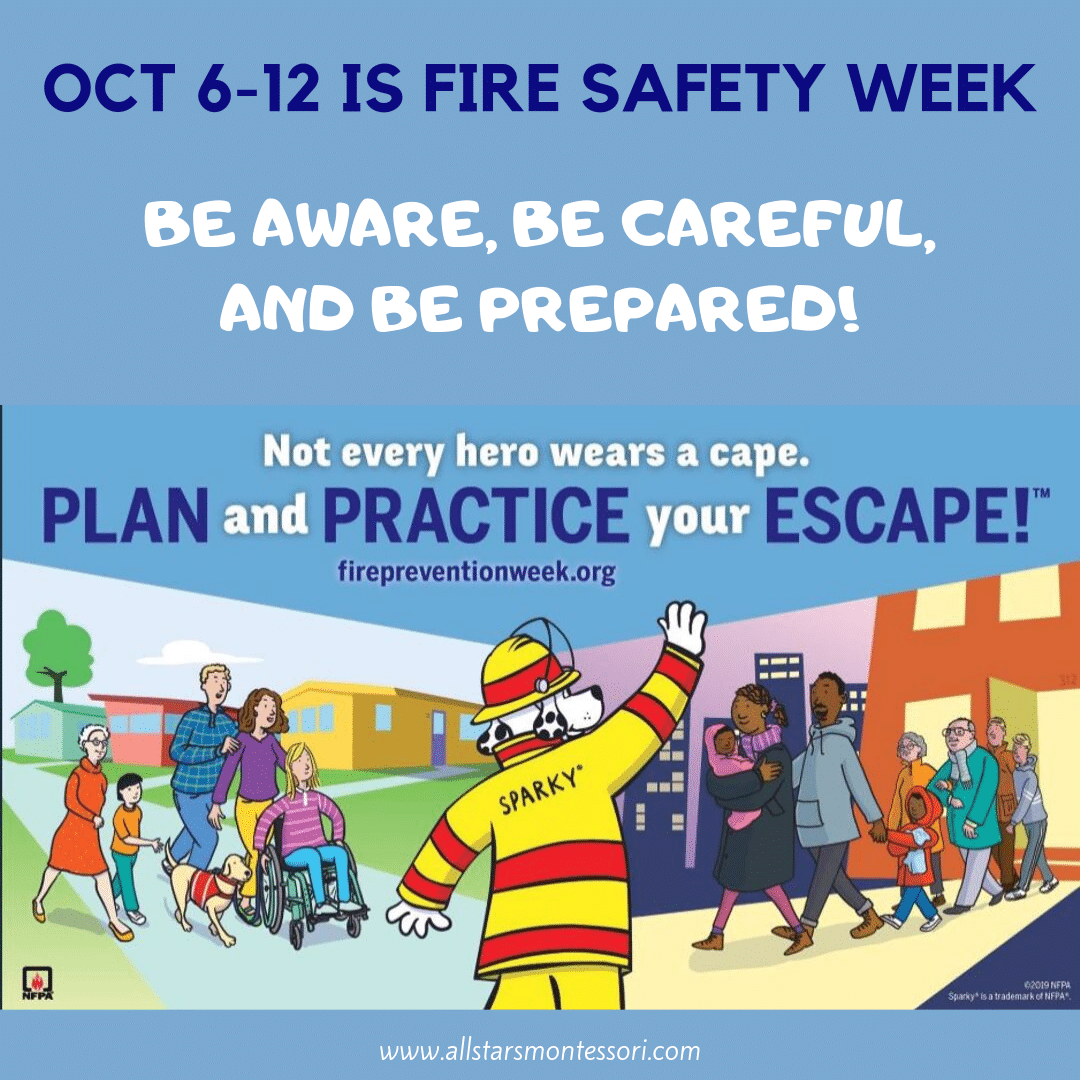Did you know that fire is the third leading cause of death in children? And even though the number of deaths caused by fires each year is declining, even one death is too many. During the month of October, the National Fire Protection Association (NFPA) sponsors Fire Prevention Week in order to highlight the importance of fire safety. Use this time to refresh yourself on important fire safety reminders so that you and your family can avoid fires in your home and know how to safely escape if one occurs.
The most important thing you can do to keep your family safe is to proactively minimize the risk of home fires. Since the number one cause of home fires is cooking, stay alert when you are in the kitchen. Never leave frying, grilling, or broiling food unattended, and keep a close eye on any food that you are cooking. Keep flammable items (such as towels, napkins, and wooden cutting boards) away from the stovetop. And always supervise children in the kitchen.
The second leading cause of home fires is heating sources such as space heaters and fireplaces. It is important that they are used carefully so remember to keep flammable items at least three feet away and never leave them unattended. Make sure that heating coils are completely cooled, and embers are completely extinguished before walking away.
Other things that commonly cause house fires are are smoking, candles and electrical problems. By taking the necessary precautions, you and your family can minimize your risk. Do not allow smoking in your home or your garage. If you use candles, make sure that they are kept out of the reach of children and pets. Never leave them unattended and don’t forget to extinguish them when you leave the room. Consider using flameless candles as a safe alternative. Make sure the outlets in your home are not overloaded and watch for frayed cords or exposed wires. Any electrical concerns should be addressed immediately.
Taking precautions will go a long way in helping to avoid a home fire, but because unexpected accidents may occur, you should also be prepared. The best way to give your family time to escape in the event of a fire is to have working smoke detectors installed in your home. Most fire deaths occur in homes that do not have working smoke detectors. The NFPA recommends that smoke alarms are installed on every level, inside every bedroom, and outside all sleeping areas. Avoid false alarms by keeping them out of the kitchen and at least ten feet from the stove. Smoke alarms with strobe lights and bed shakers are available for people with hearing problems. Test your smoke alarms monthly, change the batteries annually and replace smoke alarms that are over ten years old.
Once you have taken necessary precautions to avoid a home fire and have confirmed that you have working smoke alarms to alert you if there is one, it is time to come up with an escape plan and practice it with your family! Fires spread quickly, and in most cases, you will only have about two minutes to safely escape. In a moment of panic, a successful escape depends on having a plan and knowing it.
Each room in your home should have two ways out that are easily accessible. Bedrooms on upper levels should have fire ladders that are near the window and easy to use. Designate a meeting place outside the home and far enough away to be safe. Make sure everyone knows that when they hear the smoke alarm, they should get out, stay out and call for help. No one should reenter the home to rescue a pet or other belonging. Once you are safely out of danger, call 9-1-1.
Remind your family of the important safety tips to keep in mind during a fire. Cover your mouth and crawl low along the floor in order to minimize smoke inhalation. Never open a door that feels hot to the touch. If your clothes catch fire, you should stop, drop, and roll. Tell children that they should never hide during a fire. It is also helpful to sound the smoke alarms by pressing the test button during your fire drill so that everyone is familiar with the sound.
Set aside time to practice your fire exit plan at least twice per year. Statistics show that although many families have an escape plan, less than half practice it. During a fire, quick decision making is critical and it will not be the time to figure out the escape plan.
Small fires that are contained and not producing much smoke can be safely extinguished with proper use of a fire extinguisher. The NFPA recommends a multi-purpose fire extinguisher that is large enough to put out a small fire but not so large that it will be difficult to handle. Regularly review the instructions because there will not be time to do so in the event of a fire. Remember the acronym P.A.S.S. Pull the pin. Aim low at the base of the fire. Squeeze the handle slowly. Sweep the nozzle side-to-side. And if you are attempting to extinguish a small fire on your own, be sure to do so with your back to the exit so you can get out quickly.
For more information including games, activities, and tip-sheets, visit the NFPA Fire Prevention Week website. Remember – being aware, being careful, and being prepared can help you keep your family safe!



0 Comments